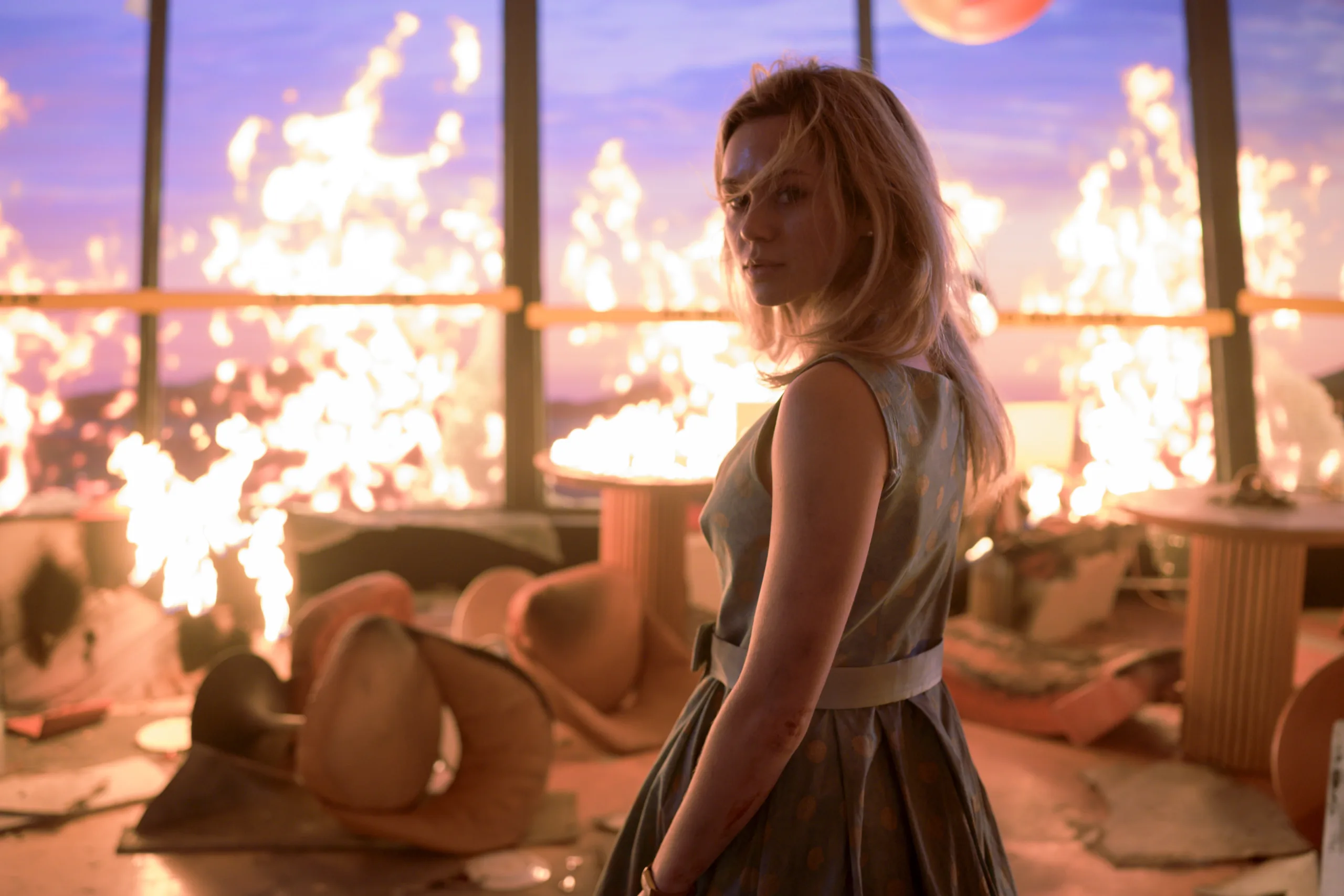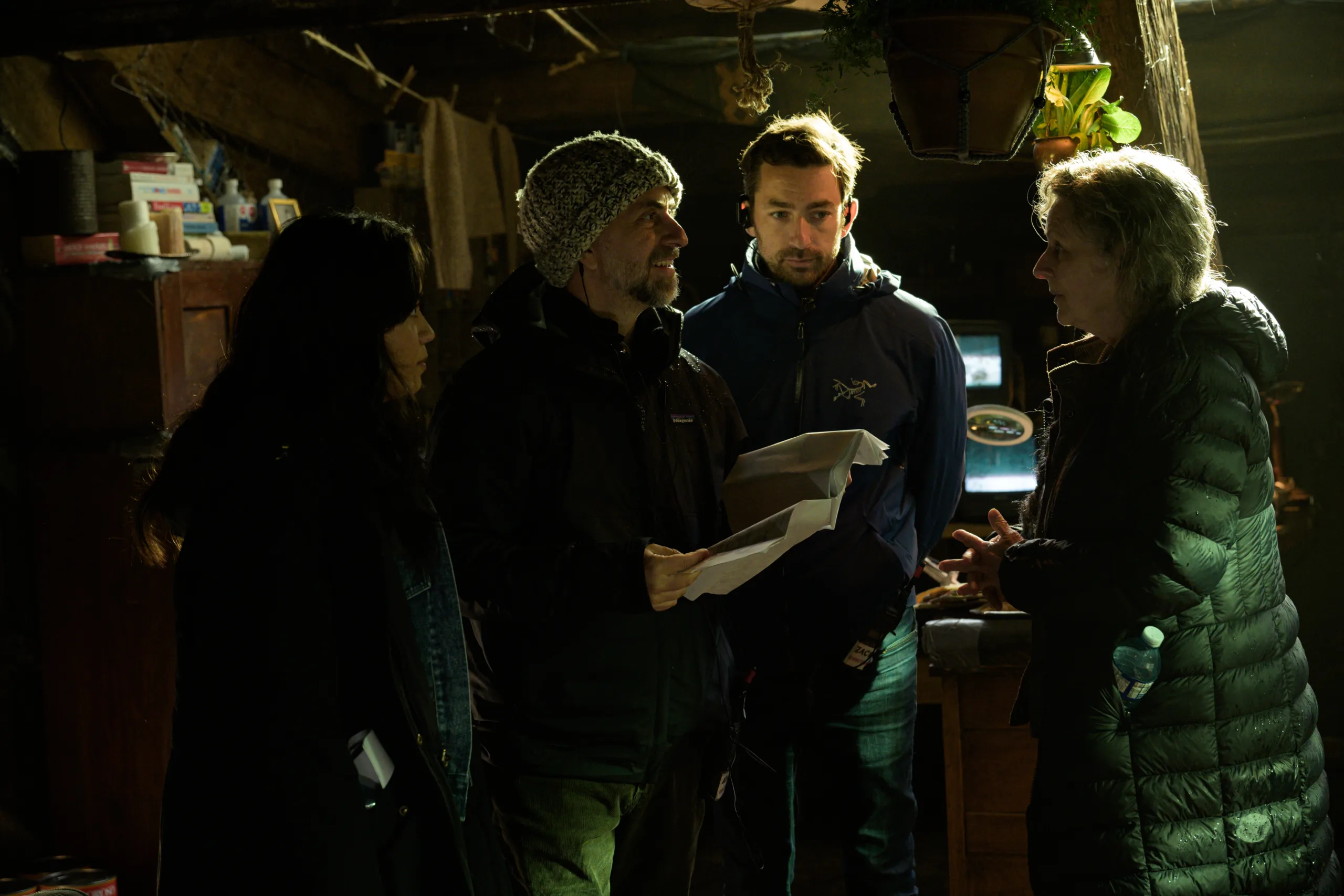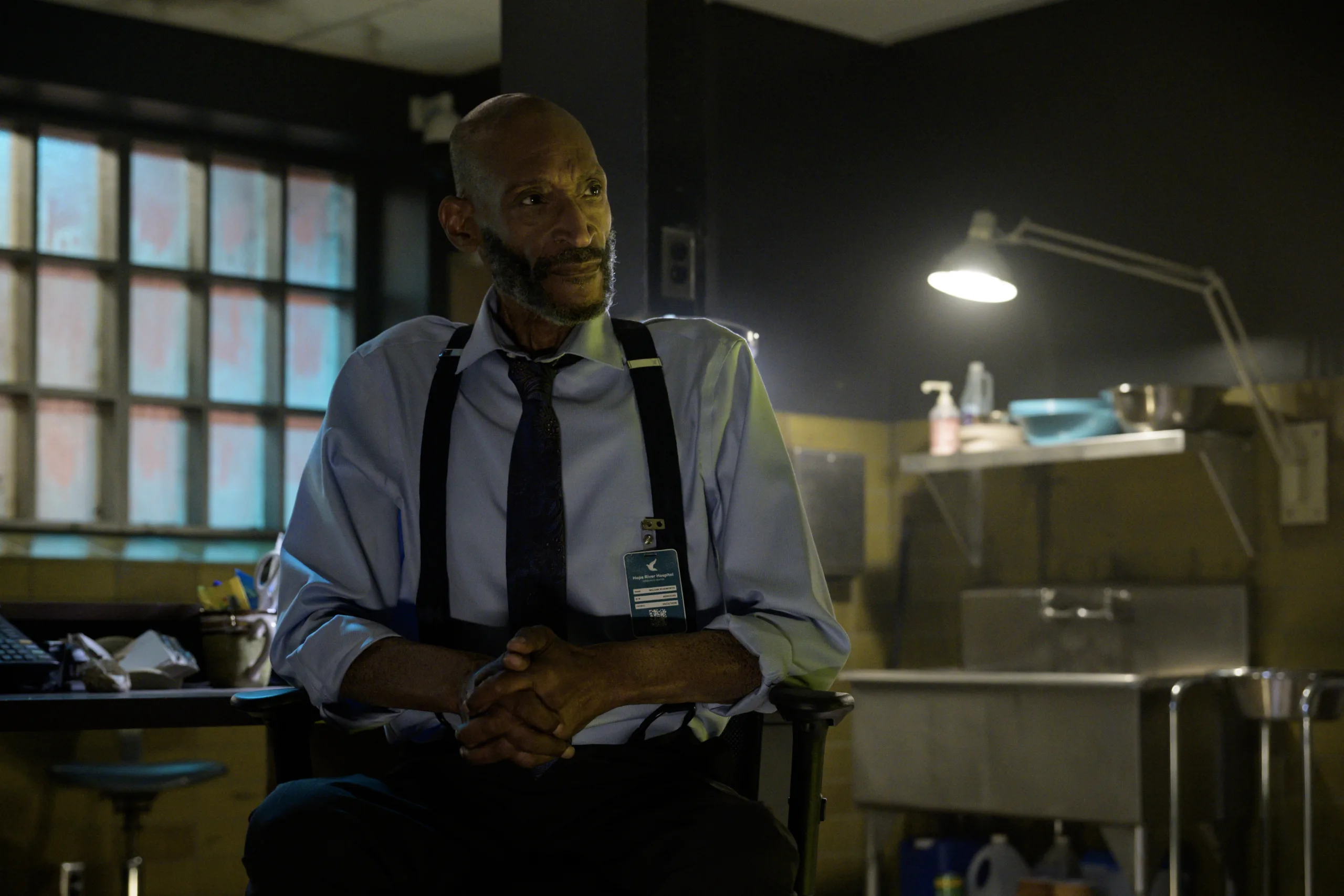The “Final Destination” series had been dormant for fourteen years when its home studio, Warner Bros. Discovery, decided to bring it back with “Final Destination Bloodlines,” one of the most profitable films of the year. To oversee the re-launch, they chose the filmmaking team of Adam Stein and Zach Lipovsky. They delivered a deliciously wicked contraption of a movie in which a young woman named Stefani Reyes (Kaitlyn Santa Juana) tries to get to the bottom of her recurring dream about her maternal grandparents, Iris and Paul Campbell, perishing in the collapse of the Skyview restaurant tower, and embarks on a surreal odyssey that reveals buried truths about her extended family, which joins the mission. The entire time, of course, the group is being stalked by none other than Death, who in time-honored “Final Destination” fashion, eventually kills off everybody as spectacularly as possible.
Stein and Lipovsky spoke to us about the unorthodox way that they convinced the studio to hire them, the nuts and bolts of directing a “Final Destination” movie, and the ultimate meaning of the entire franchise. They also spoke movingly about the experience of directing Tony Todd, who pushed through the pain of his terminal cancer to make his last series appearance as the philosophical mortician Bloodworth.
Can you tell me the story of how you got this job?
Adam Stein: We were one of 200 directing options that [the studio] had in front of them. A lot of people don’t realize that directors have to audition for their jobs, just like actors do. And so you go in and you try to tell them what you would do if you got the job. We usually put images together and talk about each scene and how we would improve the script and how we would approach each character or death. And so we’re doing all that, and it’s going well, and we’re having callback after callback with bigger and bigger executives until it comes down to us and maybe one or two other options.
And we realized—I think it was Zach’s idea, initially—that we could actually kill ourselves on this next Zoom meeting, to ‘show, don’t tell,’ that we understood “Final Destination.” Once we had that idea, there was really no turning back. We had to create a Rube Goldberg [machine] to kill ourselves live on Zoom. So that’s what we did, and I think it helped seal the deal for sure.
Zach Lipovsky: The really tricky thing about pitching is communicating the tone. It’s really okay in a pitch to just say, “It’s going to be surprising, it’s going to be funny, it’s going to be gory, it’s going to be scary, it’s going to be suspenseful, all at the same time.” But instead, we wanted to just give [the studio executives] what it’s going to be like to watch the movie. So while we’re talking away, the fireplace behind us is slowly lighting the room on fire. They’re all starting to panic, thinking it’s real. Then we put out the fire, and it seems like everything’s safe, and they think that’s all there was to it when suddenly the ceiling fan falls off the ceiling and chops Adam’s head off. It was surprising and gory and funny and inventive, and it gave them the sense of what it would be like to watch the movie.
So clearly you guys were “Final Destination” fans going into this.
Stein: Yeah! I mean, we saw the movies as they were coming out. And we were big fans of the inventive deaths: you know, their Rube Goldberg approach to horror. What’s so much fun about these movies as a director is, there’s no villain that’s depicted. There’s no monster, or killer with a mask. It’s all the close up shots of things that are coming for the characters, which means it’s really the filmmaking that’s coming for the characters, right? You know, it’s death by insert shot! And so as directors, we always admire that. You know how that was crafted. But to get to basically be death by capturing these shots and having them connect to other shots in a certain suspenseful way was a creative, fun challenge,

If you had to describe what the “Final Destination” series is about to someone who hasn’t seen any of the films, beyond what happens in them, what would you say to them?
Lipovsky: It’s definitely connected to something that’s universal about everyone’s feelings around our fate. I think fate is this bargain we’ve all made, where no matter what we do, eventually we die, and we have a lot of anxieties around that in our lives, of how we deal with the idea that eventually Death will come for us. And there’s something really unique about these films where Death comes for characters at the beginning and then they escape it. They break that bargain. They actually are now free to live their lives seemingly having gotten away with something that we’ve all accepted is a universal truth, which allows us to sort of feel like it’s fair that Death comes for them because they were supposed to die and they didn’t, and now they’re on borrowed time.
That allows the audience start enjoying the way that Death comes for them, because it’s fair. It’s not like torture porn, where [the movie] is sort of just torturing people and seeing them die for basically bleak reasons. In this case, it’s almost sort of correcting the universe’s math. So it opens the door for enjoyment, and I think it also allows people to experience the anxieties and thoughts that they have in their everyday lives, but amped up to a crazy level, where it allows them to accept that having anxiety is actually kind of an okay thing, because in regular life, you’re constantly telling yourself not to be anxious, or that anxiety is a bad part of yourself. But in these movies, it’s sort of brought to life in such a glorious way that it almost allows you to enjoy anxiety, which is a nice kind of relief for people.
Do you consider the “Final Destination” films to be comedies?
Stein: We do. I think we consider them suspenseful dark comedies, or horror comedies. Death is so clever. Death has a sense of humor
Lipovsky: And irony.
Stein: And that makes the movies incredibly fun, and funny.
Lipovsky: But we always try to make sure the humor came from character—not from jokes, but just from the insanity of these situations, like when we’re debating the plot and we’re like, “Okay, if you kill someone, you get the time left that person has left. Wouldn’t you then look for someone who has the maximum amount of time left.? So that would mean you would go and look for babies. So we should have a scene where they think about killing babies.” That comes out of plot and character and wanting to survive, but it’s also darkly hilarious. We would always approach things from that perspective.
Stein: And Death, who has a sense of humor, is planning these things. He’s planning a long game with Rube Goldberg scenarious—you know, the whole, as soon as that kid plucked the penny out of the fountain and didn’t put it back, Death was probably already planning the ending of the movie. Because Death works so hard and is so clever, that invites the audience to kind of enjoy his machinations, and be on his side.

That opening section is just an all-timer for me. I knew the audience was in good hands as soon as that horrible little kid went to the edge of the observation deck. I’m sitting there laughing, thinking, “That kid’s gonna throw that penny off. It’s only a matter of time.” When I went to the top of the Tower of the Americas in San Antonio, one of many structures that looks like the one in your movie, I wondered what would happen if you threw something over the railing.
Lipovsky: We were shocked when we were doing period research and looked at like the original building [that was our inspiration], the Space Needle in Seattle, and up on top of it, there was literally a two-and-a-half foot railing at the top. People were exposed to the world. Anyone could just leap over. There was no cage. It sounds like the same thing with your experience.
Yeah! They warned us, “Don’t throw anything over the edge. Don’t spit over the edge. Don’t drop a penny.” And I was like, “What does it matter if you drop a penny? It’s so small.” We were told,“At this height, the velocity will cave someone’s skull in.” And, of course, as I’m watching that opening scene, I’m thinking, “Oh! I guess we’re finally going to get to see that!”
Stein: We talked a lot about that. As soon as we came up with the idea with the writers and producers of having a tower, throwing something off the tower was obviously where our heads went, because of what you’re talking about. But it’s actually an urban legend. The air resistance against the penny would mean it wouldn’t actually kill someone. But the two big urban legends about a penny are, “If you throw a penny off a building, it’ll cave someone’s head in” and also, “If you put a penny on a train track, it can derail the train,” right? So we knew both those things had to be in the movie.
As a writer, when I watch this movie I’m thinking about figures of speech that could apply to the different scenarios. It’s seems like you’re deliberately visualizing figures of speech, like “you’re on the wrong track” or “See a penny, pick it up, all day long, have good luck.”
Stein: That first shot in the movie shows the train track and the other track branching off, and we come back to that at the end. For us, it really did seem like a metaphor for what “Final Destination” is. You’ve got this track that you’re on—
Lipovsky: —a track that’s straight—
Stein: —and a character branches off to a different track—
Lipovsky: —and then death comes, and runs you over with a train!
Stein: —and that puts you back on the track you were supposed to be on in the first place.
Lipovsky: Another visual metaphor you might enjoy, especially if you re-watch the movie, that we put through the whole film, is this concept: “Circles Kill.” That means death is represented as a circle in almost every scene of the movie. The tower in that opening sequence is round. The dance floor is round. The iris of the eye is round. The interior of the MRI machine is round. The penny is round. All the way through the movie, we kept centering these circles and treating them as sort of a “representation of death” symbol. The circle also represents the beginning coming all the way around to the end. The cyclical nature of death is that you may think you’ve gotten away from it, but it always comes in and it ties up the loose ends.
Stein: [The art department] added a neon circle in the tattoo parlor that Stefani’s cousin Erik (Richard Harmon) walks towards that is reminiscent of the MRI that will eventually kill him. We kept finding circles and planting them. You were asking about what these films are about earlier. I think on the most basic level, they’re about how you can’t escape death, right?
Lipovsky: That’s what Tony Todd talks about in his scene where he’s in the morgue. What he says is basically, “Guys, you’re not going to escape this. Just enjoy the time that you have left.” That’s something that the audience has to reckon with in their own lives. Just enjoy every second that you have, because you’re not gonna be able to get away.

Did you know Tony Todd was terminally ill when you were shooting that scene?
Lipovsky: Yes. He was sick for years.
Stein: We weren’t sure at times whether he would be able to participate. But we kept hearing from him, you know: “Don’t write me out of this movie! I’ve gotta be in this movie!” He loved the character and was very excited when he came to the set. You could see how physically diminished he was. I mean, he doesn’t look like his old self in the movie. His mortality was present throughout the process. We didn’t know he would die so quickly, but we were pretty sure that this would be his last “Final Destination” movie because these movies take years to make, so we thought this would probably be a goodbye to the character of Bloodworth.
The script was written with that in mind—that this would be Tony Todd’s last “Final Destination” appearance. I think that might have been why he was so passionate about being there. You could tell when he was there that, even though he was physically diminished, he was just so happy and excited. He loved meeting all the other actors. He had a particular connection to [lead actress] Kaitlyn [Santa Juana]. I think they bonded off-camera about religion. They talked about that quite a bit. He was excited to meet the actors playing his mom and his younger self. He kept saying, “I get to meet my mom today!” I think you can see in his eyes how joyful he was and how excited he was to be on set, doing what he loves. Those words that he said in the movie: he was living it. Enjoy every single second. That’s how he was living. And it was really inspirational.
Lipovsky: We told him to speak off-script, to just talk to the audience. The words he speaks are the words that he created in this on the spot.
Stein: There was [originally] a scene we had written that ended with him saying, you know, “I’m retiring, I’m going to enjoy the time I have left,” but we just felt in the moment when we were filming with him that it wasn’t enough to land that moment, and to earn the gravitas of what was really happening here. And so we asked him if he would feel comfortable just speaking from the heart about, you know, “Tony, what does all this mean? What has all this been about, all this “Final Destination” stuff? Would you be okay speaking to the fans about what life is about and what death is about? The words that are in the movie were the off-the-cuff words that Tony wanted to say directly to his fans about what was on his mind, and I think that’s why it’s so powerful.
“Final Destination Bloodlines” is now on Blu-ray, DVD, and VOD.
